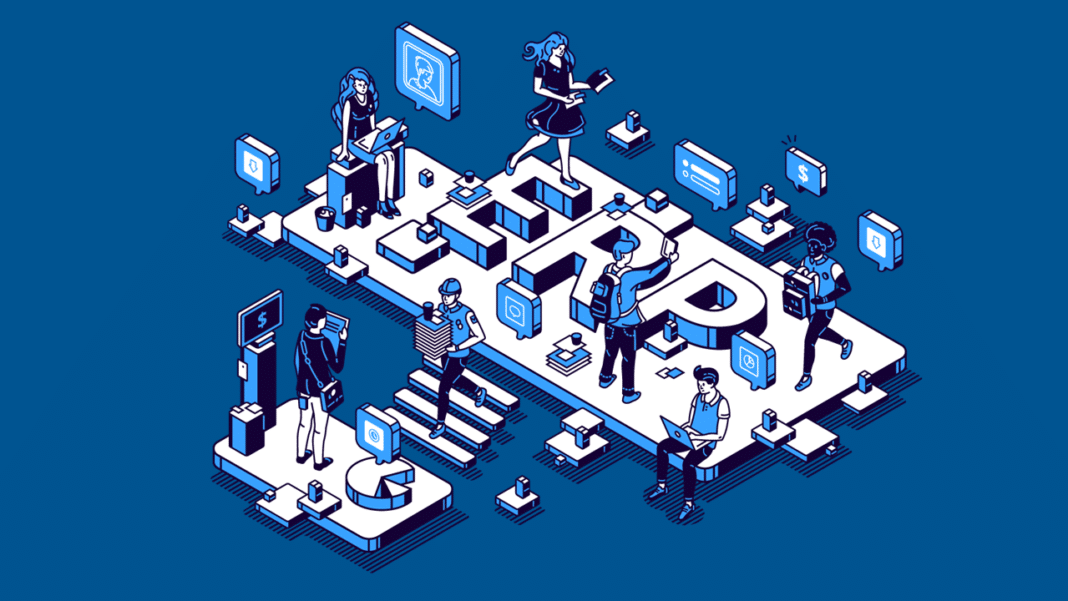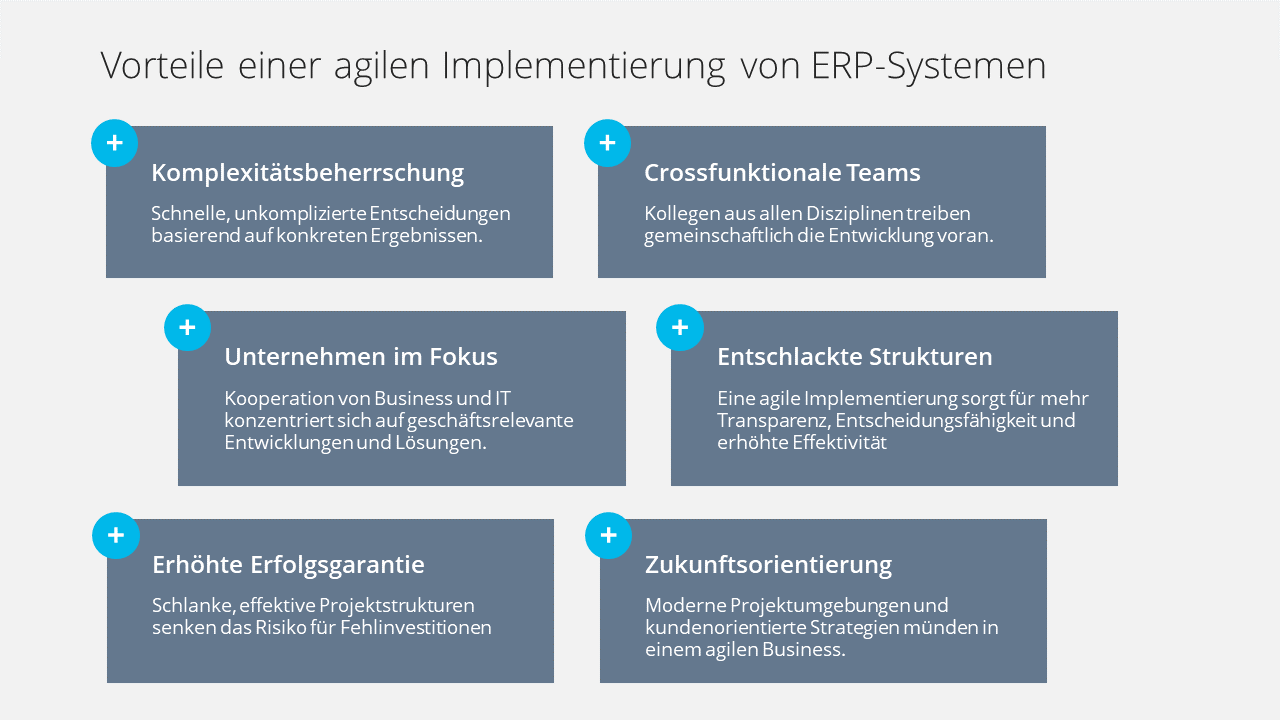
The complexity of modern ERP systems requires a change in mindset
For many companies, enterprise resource planning is an integral part of organizing capital, operating resources, IT and other areas. When implementing the ERP systems, the classic waterfall model has largely been used as the project method. Project phases are clearly separated from one another, the project only moves on to the next after one phase has been completed. The agile approach, on the other hand, distances itself from this purely sequential progress: an agile approach is characterized by shorter phases in which work steps such as analysis, planning and development as well as tests that take place at the same time are repeated and implemented in an iterative-incremental manner.
For a long time, the prevailing opinion was that an agile approach was incompatible with an ERP implementation due to its size, duration and special structure. A fatal mistake, because precisely due to the complex nature of modern ERP systems and the corresponding consequences for implementation, an agile approach is the much more promising strategy for the transformation to the latest ERP generation.
ERP transformations are still a hot topic
In addition to other IT trends such as ‘cloudification’ and ‘artificial intelligence’, the further development of ERP is continuously one of the main topics in IT-driven digitization of companies. Modern ERP solutions offer companies a lot of potential for digitization that older systems can no longer provide – e.g. in the area of business intelligence and mobile solutions. In addition, some programs are approaching the end of their life cycle and are no longer supported. In this context, many companies are faced with the question of whether the existing infrastructure should be upgraded or completely migrated to a new system.
In short: A transformation to a modern ERP system, such as SAP S/4HANA, is currently on the agenda for many companies.
Advantages of an agile implementation of modern ERP systems
The agile approach shows its advantages when it comes to mastering complex projects that cannot be planned in detail, with a multitude of unknowns and resulting dynamic interactions. Mastering complexity requires, among other things, quick, uncomplicated decisions based on concrete results from short development cycles. Classic, very long project phases with developments based on comprehensive lists of requirements carry a drastically increased risk of bad investments in a complex environment.
The advantages of a strict agile implementation are obvious. Small, cross-functional teams – a mixture of IT developers, designers, testers and, above all, business analysts from the specialist departments – work together on the progress from the beginning to the end of the project and can specifically and effectively evaluate the effects of their work. The close cooperation between IT and business prevents the projects either bypassing the company’s needs or making their implementation unnecessarily complicated. The decisive KPI is the usability of the results – and this becomes immediately transparent and measurable through the structure of the project team.
Very large projects, such as the introduction of ERP systems, very often suffer from their complex structures. In the past, too, this often led to sluggish, slow progress and a lot of frustration among decision-makers. An agile introduction specifically addresses these weaknesses in previous project models and ensures more transparency, more decision-making ability and ultimately more effectiveness.
Agile approach and ERP in practice
In order to use an agile approach in an implementation project for an ERP system, it is not enough to use arbitrary rituals of well-known agile frameworks such as Scrum, but a change process of all participants towards an agile way of thinking takes place. Examples here are the change from specialization in area silos to cross-functional work on E2E processes, the very consistent customer and benefit orientation as the most important measurement criterion, iterative planning over smaller milestones (increments, prototypes) and the strict separation between problem and solution focus. The latter offers the development teams unusual freedom in order to be able to react as creatively as possible to complex requirements in the development, but at the same time requires rethinking the roles involved, e.g. the classically trained project manager.
Accordingly, an agile project includes training the people involved to work in this way. Greater personal responsibility, an incremental approach, the highest level of transparency at all levels, other decision-making paths, etc. must be learned and tested – so that the strengths of the agile approach come into play.
With this in mind, it is advisable to accompany an agile ERP implementation project with change management, to analyze and use restrictions, degrees of freedom and potentials properly, to set up adequate stakeholder and communication management and to promote and demandt the agile maturity of the teams bit by bit.
Long-term effects of agile ERP projects
An agile ERP project based on an agile strategy can generate numerous advantages for the company in the medium and long term. In addition to an increased guarantee of success for the project itself, the first step is taken to dissolve outdated, slow and overloaded work structures.
By testing leaner project structures and proving their effectiveness, the risk of bad investments and lengthy, sluggish projects in the company’s future portfolio is significantly reduced. By being closer to the actual use of the results, agile teams often work much more motivated; live an open and direct communication and are continuously improving. Handover points that were always the predetermined breaking points in the past – e.g. the final handover of development in operation – are gradually reduced through the cross-functional understanding.
In summary: The agile implementation of such a central project as an ERP implementation offers companies the opportunity to initiate a change in the entire company – towards a more future-oriented, customer-oriented strategy, efficient comprehensive portfolio management and lean project procedures – i.e. more business agility.








